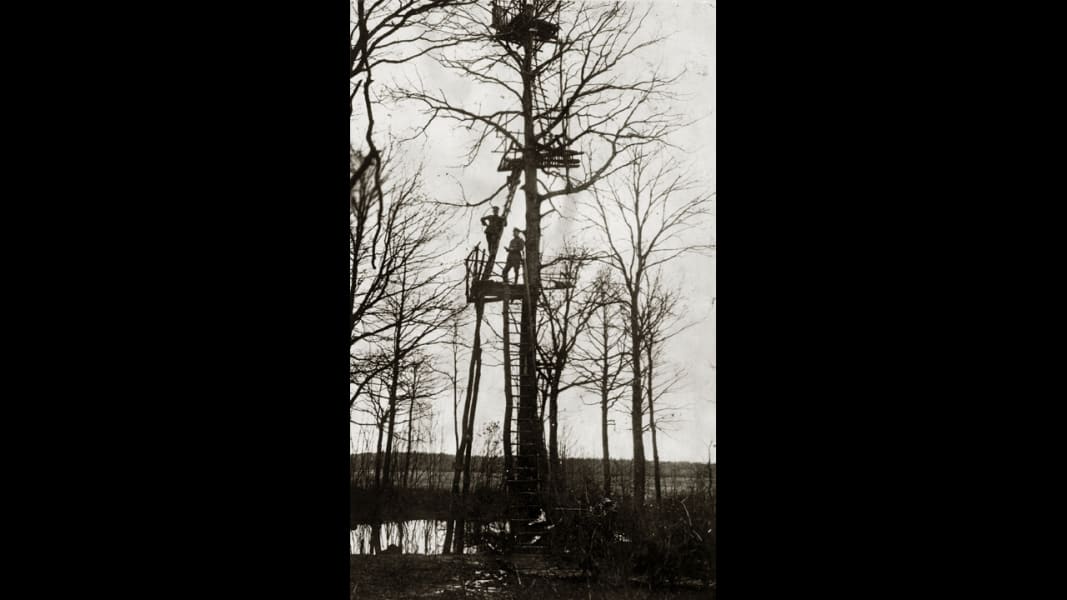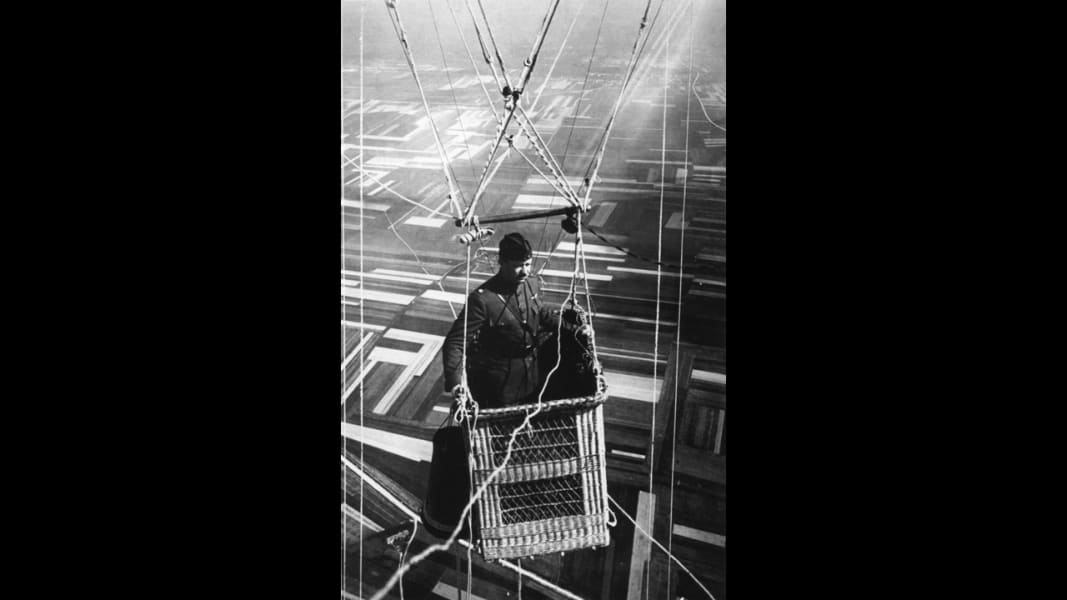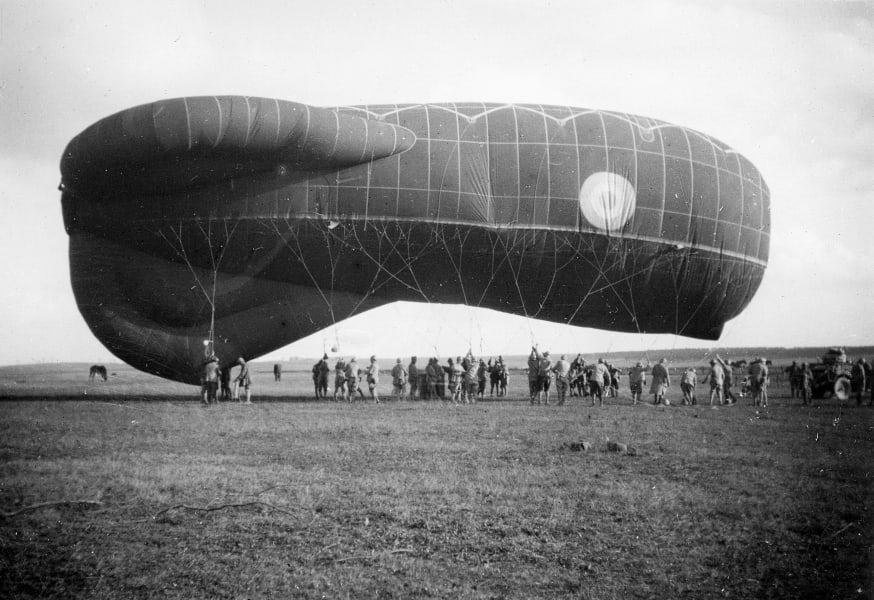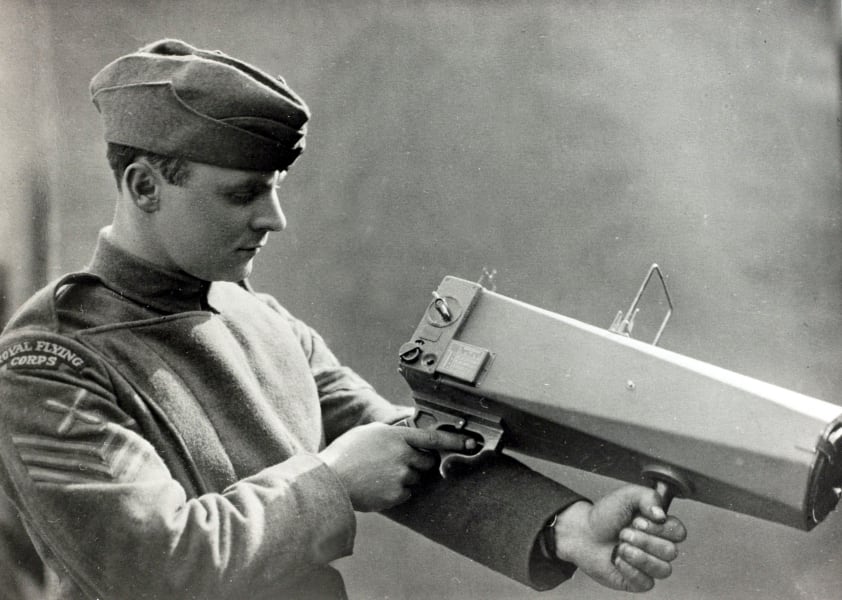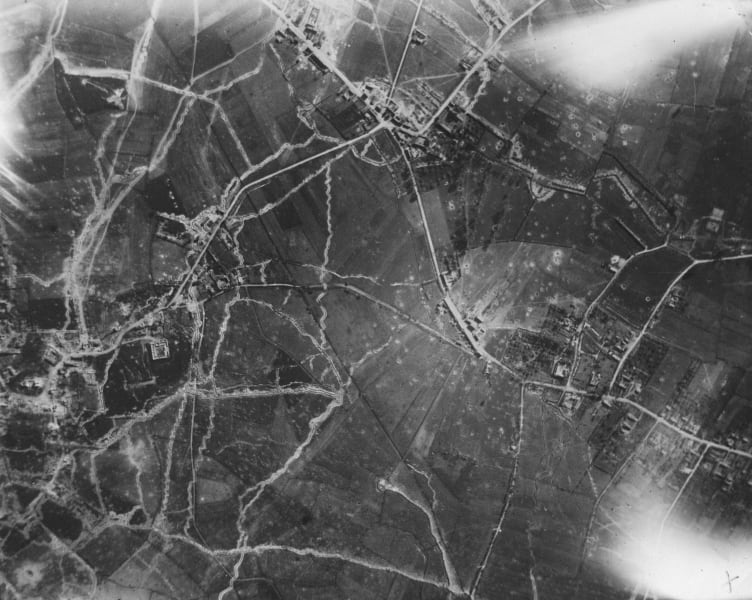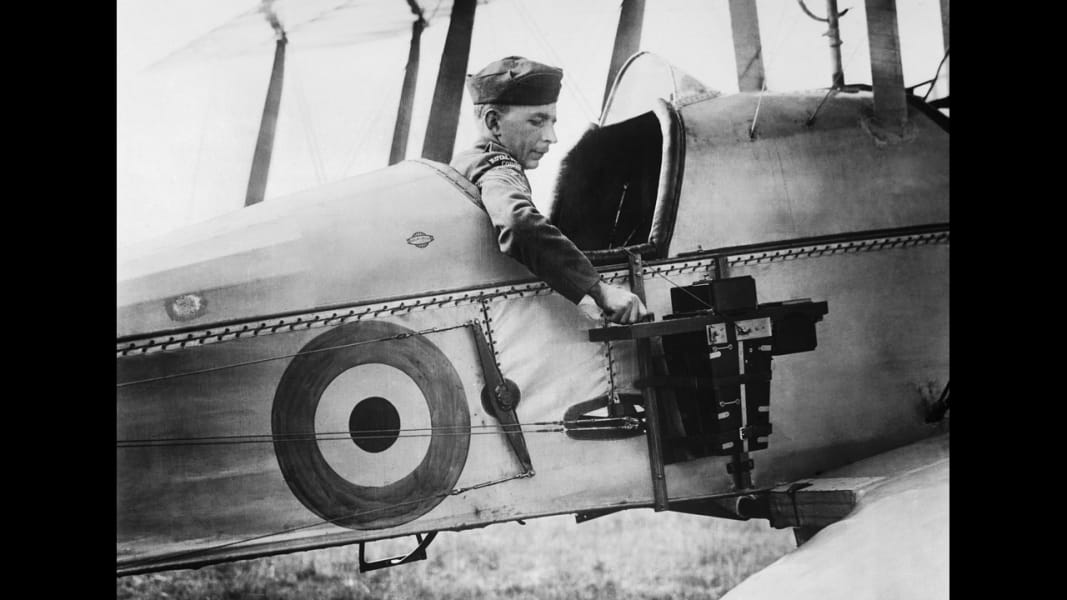Share
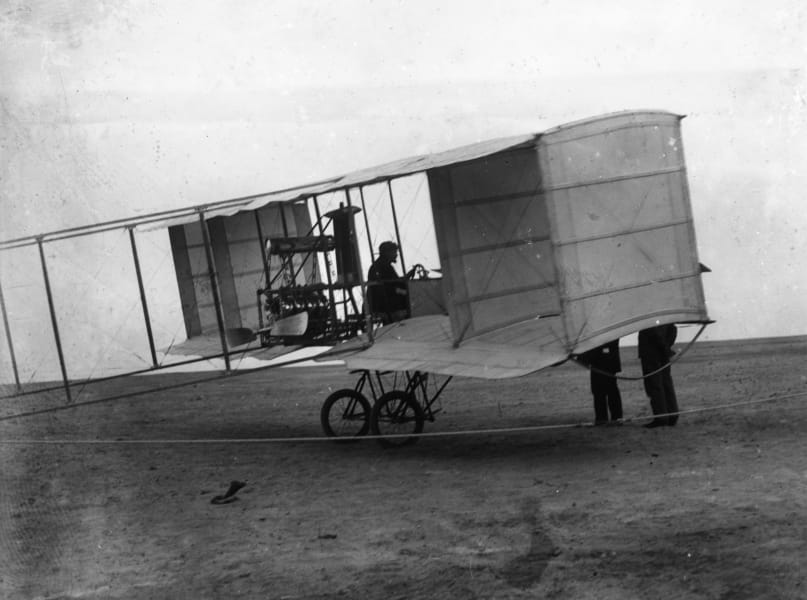

1 of 8
Air power harks back to Civil War-era hot air balloons and was used all over the theaters of World War I for reconnaissance, bombardment, and aerial combat. Here, the French-built Voisin "pusher," originally built for reconnaissance and later developed as a bomber. It is credited with the first air-to-air kill. Hulton Archive/Getty Images
British war photographer David McLellan, originator of the photographic section of the Royal Flying Corps, holds a camera specially adapted for aerial pictures in 1915. The potential of aerial surveillance and bombardment was most rigorously tested and developed in the British campaign against the Ottoman Empire during WWI. Paul Popper/Popperfoto/Getty Images
An aerial reconnaissance photograph from May 29, 1915, shows trench networks at Le Plantin, "Windy Corner," in France. Hulton Archive/Getty Image
An early aerial photograph from 1915 shows the Belgian town of Ypres, the site of three major battles during World War I, and almost completely devastated by bombing. Hulton Archive/Getty Image
A sergeant of the Royal Flying Corps demonstrates a C type aerial reconnaissance camera fixed to the fuselage of a BE2c aircraft, 1916. For the British, during the war and later for colonial policing in the postwar Middle East, surveillance aircraft seemed to promise vision beyond the mirages, sandstorms, and distances that made the region unmappable in their estimation. IWM/Getty Images
Surveillance was sometimes more low-tech, as in this German observation post in a tree during the Battle of Verdun, 1916 ... Popperfoto/Getty Images
... or this observation balloon, from which an American Army major commanded a view of the front lines in June 1918 ... Interim Archives/Getty Images
... and this not-very-subtle sausage-shaped observation balloon in France on November 10, 1918. The balloons were used for, among other things, artillery spotting. Because they were filled with flammable hydrogen, they were well-guarded by anti-aircraft artillery. Jacques Boyer/Roger Viollet/Getty Images
